
Keeping Cool: Everything You Need to Know About Body Chillers
Why Body Chillers Are Essential for Modern Cooling Needs
A body chiller is a specialized refrigeration system designed to cool water, air, or fluids that circulate around the human body for therapeutic, athletic, or preservation purposes. These systems range from personal cooling vests and ice bath chillers to professional mortuary storage units.
Key Body Chiller Types: • Personal cooling systems - Vests, hats, and portable units for heat stress relief • Ice bath chillers - Water cooling units for athletic recovery (37-55°F) • Medical chillers - Therapeutic cooling for rehabilitation and surgery • Mortuary coolers - Professional storage units for deceased care (2-12 body capacity)
Body chillers work by circulating cooled fluid through a closed-loop system, maintaining precise temperatures while filtering and sanitizing the cooling medium. Whether you're an athlete seeking faster recovery, a worker managing heat stress, or a funeral professional requiring reliable deceased storage, understanding the right type of body chiller can make all the difference in safety and effectiveness.
From the Recovery Chiller that transforms any bathtub into an ice bath for just $0.19 per day in energy costs, to professional mortuary walk-in units rated for 1,000+ pounds, these systems have evolved far beyond their original aerospace applications over 60 years ago.
I'm Mortuary Cooler, a national-level mortuary cooler supplier specializing in American-made refrigeration solutions for funeral homes and medical facilities. With experience in body chiller technology and custom mortuary equipment, I've helped countless professionals select the right cooling systems for their specific needs and space constraints.
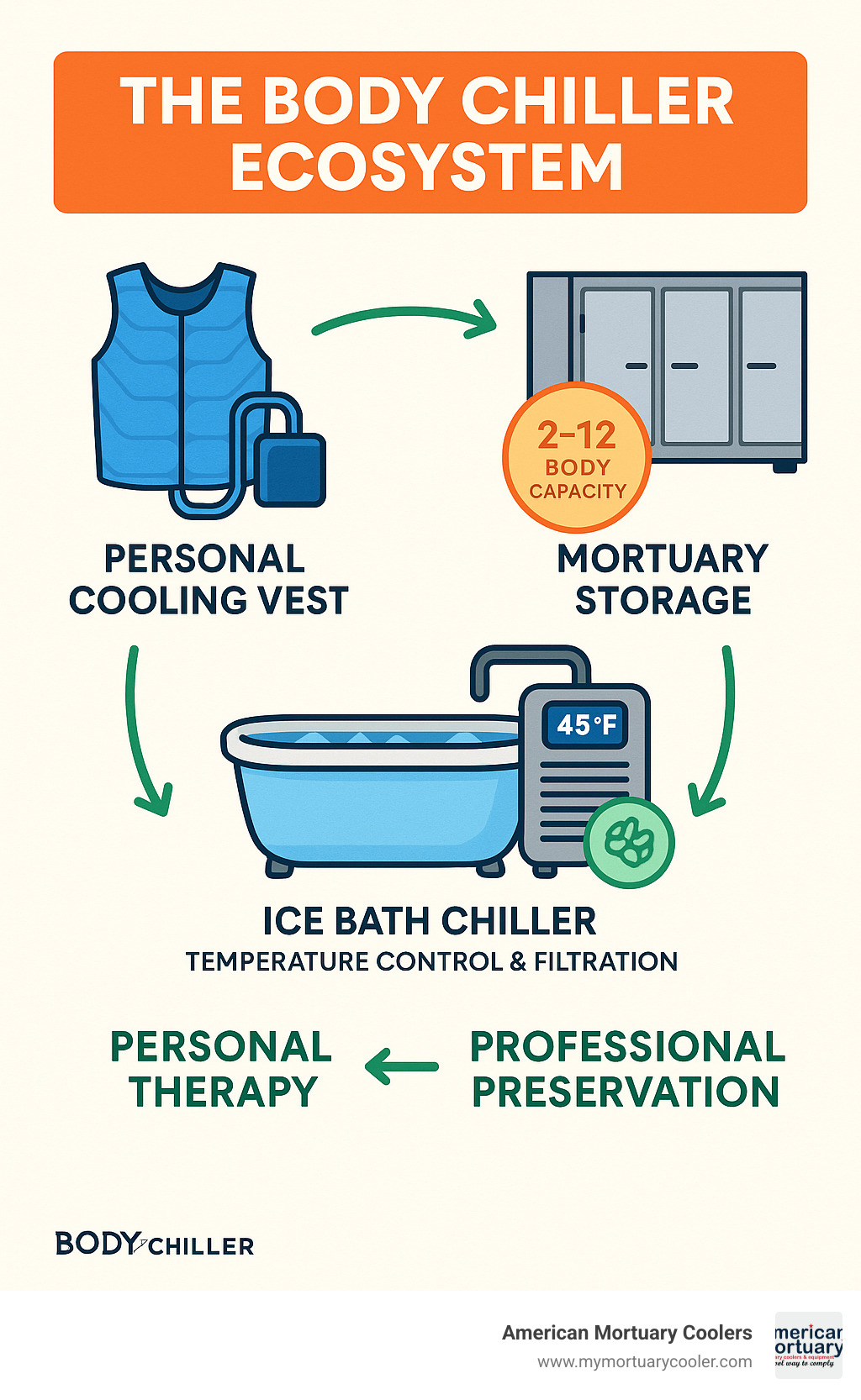
Relevant articles related to body chiller: - mega mover tarp - sensi gloves - stainless steel medical cabinets
How a Body Chiller Works (The Science Behind the Chill)
Understanding how a body chiller works is simpler than you might think. These clever machines use the same basic cooling principles as your kitchen refrigerator, just engineered for a completely different purpose - keeping water ice-cold for your recovery sessions or maintaining precise temperatures for professional applications.
Every body chiller operates through what's called a refrigeration loop. Think of it as a continuous circle where heat gets picked up from one place and dumped somewhere else. The process starts when a compressor squeezes refrigerant gas, making it hot and pressurized. This heated gas flows to the condenser coil, where it releases all that heat and transforms into a cool liquid.
Here's where things get interesting - that cooled liquid passes through an expansion valve, which drops both its pressure and temperature dramatically. Now super-cold, this refrigerant enters the heat exchanger (the business end of your chiller), where it hungrily absorbs heat from whatever you're trying to cool. Whether that's water in your ice bath or air in a cooling vest, the refrigerant steals the heat and carries it away.
Modern body chillers don't stop at basic cooling. They include circulation pumps that keep water moving at steady rates - typically around 500 ml per minute for personal vests. The digital thermostat acts like the brain, maintaining temperatures within just ±2°F of your target setting.
The real magic happens with the filtration and sanitation systems. A 20-micron filtration system continuously removes the gross stuff - dead skin cells, hair, and debris that would otherwise turn your pristine ice bath into a science experiment. Many units also feature UV or ozone sanitation that kills bacteria and viruses without adding harsh chemicals to your water.
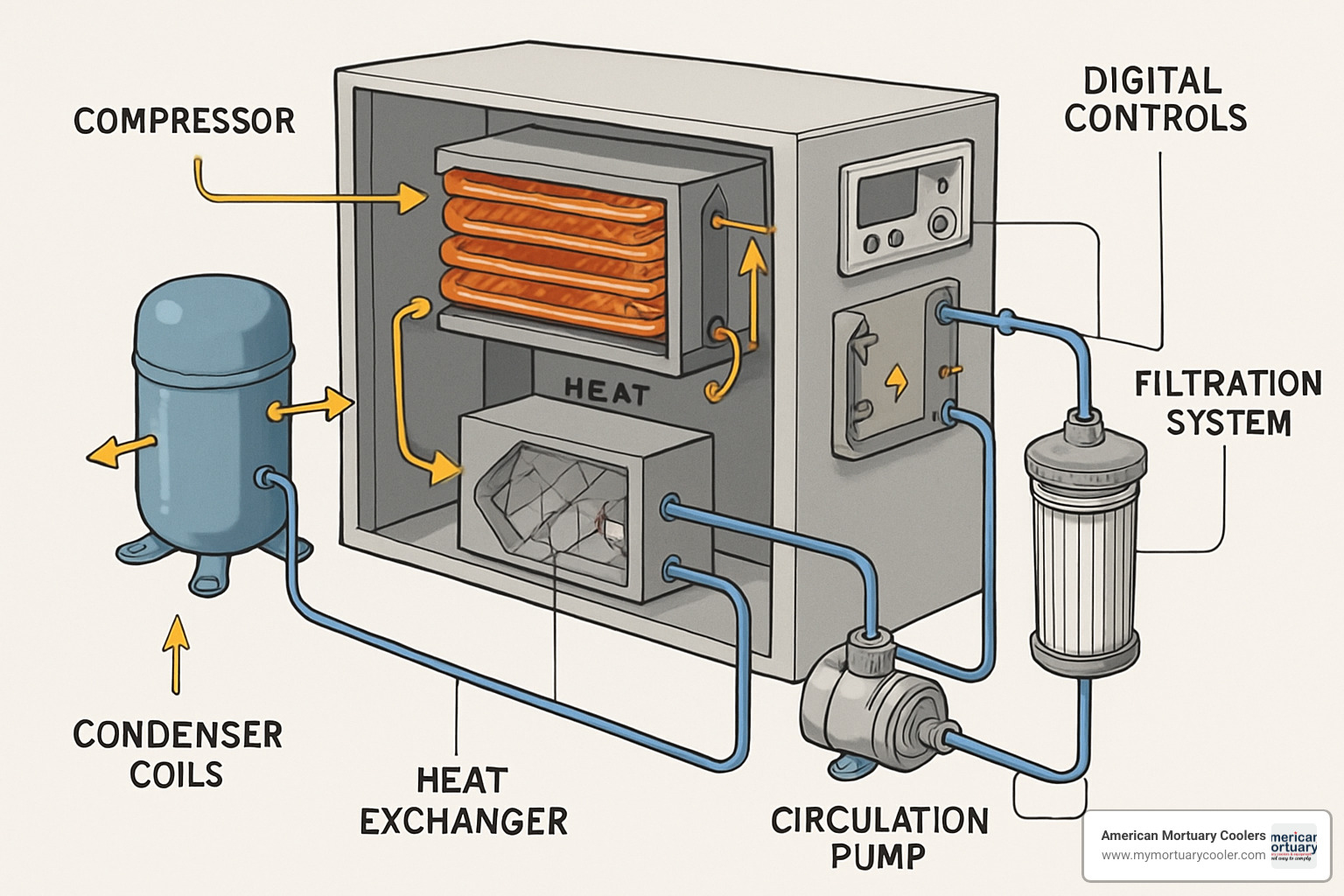
Anatomy of a body chiller
The compressor is essentially the heart of your body chiller. These workhorses typically range from 1/10 HP for personal units up to 3/4 HP for larger systems. What makes them special is their ability to run continuously in extreme conditions - from blazing 120°F summer heat down to frigid -20°F winters, all while keeping your water at a steady 37°F.
The condenser coil handles the hot side of the equation, releasing all that absorbed heat into the surrounding air. Most ice bath chillers use air-cooled condensers positioned for maximum heat dissipation. The coolant itself has evolved too - modern units use eco-friendly refrigerants like R-134a that flow through copper or aluminum tubing designed for maximum heat transfer efficiency.
Don't overlook the insulated housing - it's what keeps your energy bills reasonable. Professional mortuary units feature thick 4-inch high-density insulated panels, while personal systems use lightweight materials that still provide excellent thermal protection. Quality units include safety features like overload sensors and anti-freeze protection to prevent expensive heat exchanger damage.
Temperature ranges & therapeutic effects
Different body chiller applications demand specific temperature ranges, and getting this right makes all the difference. Ice bath chillers typically maintain water between 37°F and 55°F, with many capable of reaching as low as 39°F. Personal cooling vests circulate fluid between 40°F and 70°F, letting you dial in the perfect intensity based on how hot it is outside and your personal tolerance.
These aren't random numbers - they're carefully chosen to trigger specific responses in your body. Water at 45-55°F causes vasoconstriction, where your blood vessels narrow to reduce inflammation and swelling in muscles and joints. This same temperature range stimulates endorphin release and increases circulation when you warm back up, dramatically speeding recovery from exercise or injury.
Scientific research on cold-water therapy shows that regular cold exposure can boost your metabolism through brown fat activation, build mental resilience, and strengthen your immune system. The key is maintaining consistent temperatures - something only dedicated body chillers can achieve reliably, day after day.
Main Types & Applications of Body Chillers
The body chiller world is surprisingly diverse, stretching from tiny personal cooling devices that fit in your backpack to massive walk-in units that serve entire funeral homes. It's fascinating how the same basic cooling technology can help a construction worker beat the heat, speed up an athlete's recovery, and provide dignified care for the deceased.
The story of personal cooling systems actually begins over 60 years ago in the most extreme environment imaginable - outer space. NASA engineers developed the first body cooling systems for astronauts and military pilots who faced life-threatening heat stress. Today, that same technology has evolved into sophisticated devices that anyone can use, whether you're working construction in Phoenix or training for a marathon.
What's remarkable about modern body chillers is their versatility. The refrigeration principles that keep mortuary storage units at precise temperatures also help stroke patients during critical recovery periods and allow weekend warriors to bounce back faster from tough workouts. Understanding these different applications is key to choosing the right system for your specific needs.
Personal & Athletic body chiller units
Personal cooling vests have become game-changers for anyone dealing with heat stress. These lightweight systems typically weigh just over a pound when dry and deliver 6-8 hours of cooling relief on a single battery charge. The Compcooler vest stands out with its breathable mesh design and adjustable fit, featuring over 50 feet of insulated cooling lines that wrap around your torso for complete coverage.
For unlimited runtime, backpack-style units like the Cool Flow system let you refill the reservoir anywhere you can find water. These military-grade systems are built tough and can actually make ice on the spot when you're nowhere near a convenience store. The whisper-quiet pump moves 500 ml of cooling fluid per minute, so you get consistent relief without sounding like a lawn mower.
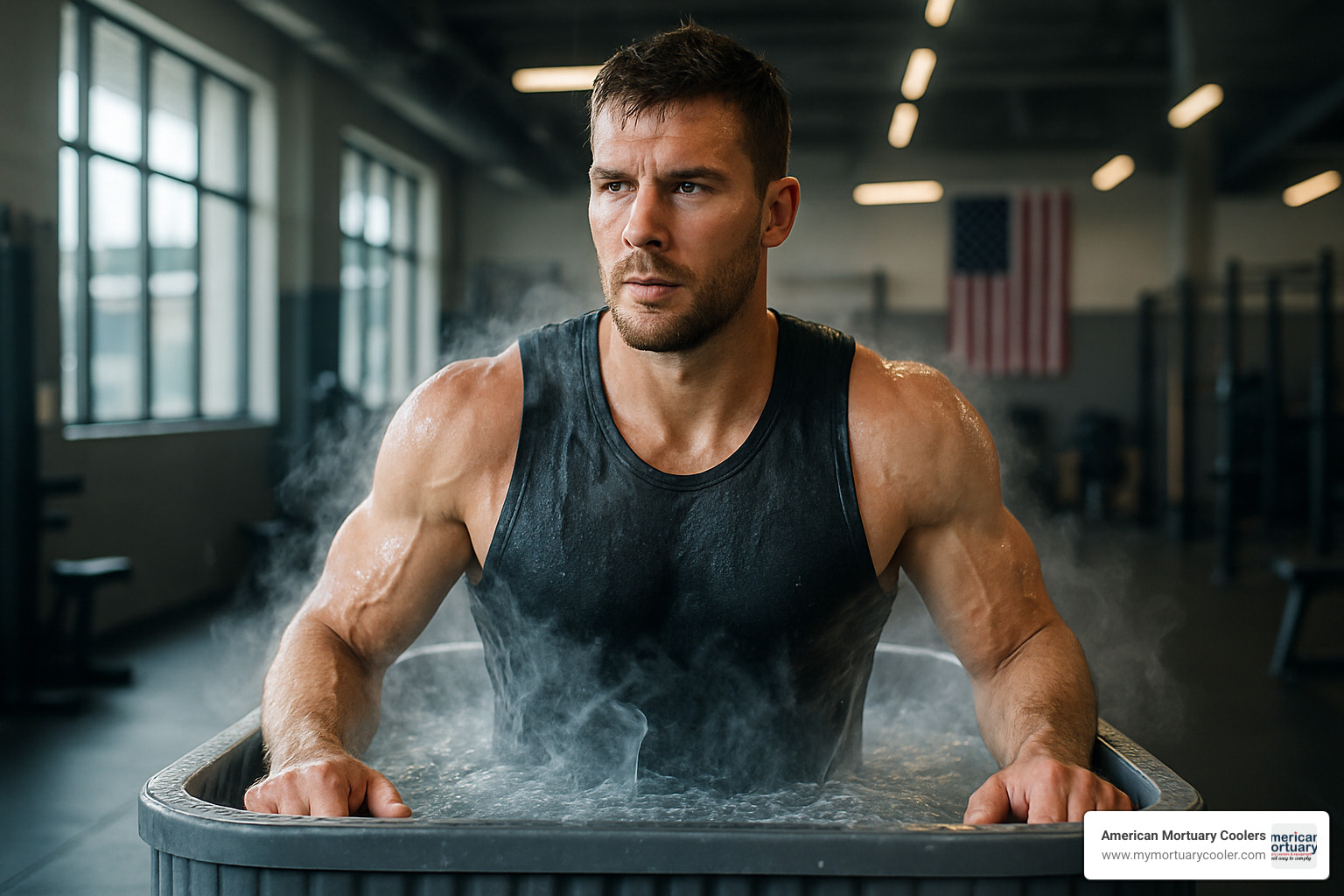
The Recovery Chiller has completely transformed home ice bath therapy by turning any regular bathtub into a cold plunge system. At just $0.19 per day in energy costs, it's no wonder over 10,000 users have given it a 4.8-star rating. No more hauling bags of ice from the store or dealing with inconsistent temperatures. The Pod Chiller offers similar convenience, maintaining crystal-clear water at 39°F with round-the-clock filtration.
Cooling hat inserts provide targeted relief that's perfect for outdoor workers and athletes who need to keep their heads cool. These patented devices feature dual-sided gel pads - you get both gentle "Cool Chill" and intense "Extreme Chill" options depending on how much relief you need. Used by tens of thousands of people across more than 50 different industries, they fit into everything from baseball caps to hard hats.
Medical & Therapeutic body chillers
Medical body chillers play crucial roles in rehabilitation and therapeutic treatments that can literally save lives. Stroke patients benefit enormously from rapid therapeutic cooling during those critical first hours when every minute counts. These systems provide precise, gentle temperature control that helps reduce dangerous brain swelling while preserving precious neurological function.
The Arctic Chiller system represents the gold standard in medical cooling technology. Its 1/10 HP chiller maintains water temperatures anywhere between 40°F and 70°F, with a bright digital display that shows exactly what's happening. The built-in anti-freezing system protects the heat exchanger from damage, while the auto-drain feature lets you empty the unit without any heavy lifting.
Whole-body cryotherapy applications use specialized body chillers to create controlled cold environments for treating chronic inflammation, persistent pain, and various metabolic disorders. These systems demand extremely precise temperature control and constant safety monitoring to deliver therapeutic benefits without any risk of hypothermia or frostbite.
Clinical cooling vests offer a lifeline for patients dealing with dysautonomia and neurological conditions that mess with their body's natural temperature regulation. The lightweight, unisex design works under or over regular clothing, providing discrete therapeutic cooling that lets people go about their daily lives normally.
Mortuary & Forensic body chillers
Professional mortuary body chillers range from compact 2-body units perfect for smaller funeral homes to massive 12-body walk-in systems that serve large facilities. These units must maintain rock-solid temperature control while providing easy access for funeral professionals and ensuring the dignified storage that families deserve during difficult times.
Standard mortuary coolers feature telescoping slide rails that work with stainless steel cadaver trays in 23, 27, or 30-inch widths. Interior widths can reach up to 36 inches to accommodate bariatric cases, with our AMC PRO Series BODY LIFT rated for 1,000 pounds or more. This means funeral homes can handle virtually any situation with confidence and dignity.
Modern mortuary units come loaded with professional features like digital temperature displays, self-closing hinges, magnetic door gaskets, and NSF cove bases that make sanitation straightforward. All panels meet the Federal Energy Independence & Security Act requirements, so you get excellent energy efficiency without sacrificing performance.
Portable forensic coolers serve the critical needs of disaster response teams and medical examiner offices that need reliable temporary storage solutions. These rugged units provide dependable refrigeration even in challenging field conditions, while maintaining the preservation quality and dignity required for thorough forensic investigations.
Choosing, Maintaining & Safely Operating Your Body Chiller
Picking the right body chiller can feel overwhelming at first, but breaking it down into key factors makes the decision much clearer. Think about your specific needs: Do you need a portable vest for outdoor work, an ice bath for athletic recovery, or a professional mortuary unit for your funeral home?
Temperature span is your first consideration. Ice bath chillers need to reach those therapeutic sweet spots of 37-39°F for maximum benefit, while personal cooling vests work great between 40-70°F. If you're running a funeral home, mortuary coolers maintain precise temperatures around 38-40°F with digital controls that won't let you down.
Capacity matters more than you might think. For personal use, the Pod Chiller weighs just 39 pounds compared to bulky competitors at 60+ pounds - your back will thank you. Professional mortuary units require careful space planning, from compact 2-body boxes (57-1/2" x 8' x 8' H) to spacious walk-in chambers that handle high-volume needs.
Energy efficiency directly hits your wallet. The Recovery Chiller costs only $0.19 per day to operate - that's less than a cup of coffee! Larger mortuary units typically need standard 110V power with 6-amp draws, keeping operating costs reasonable even for 24/7 operation.
Cost ranges vary dramatically based on your needs. Personal cooling systems run $799-$1,200, while professional mortuary units range from $7,000-$15,000 depending on capacity and features. You're investing in reliability and precision that cheaper alternatives simply can't match.
| Cooling Method | Initial Cost | Operating Cost | Pros | Cons |
|---|---|---|---|---|
| Ice | $0-50 | $10-20/day | Simple, portable | Messy, inconsistent temps |
| Body Chiller | $799-15K | $0.19-5/day | Precise, convenient | Higher upfront cost |
| Evaporative | $100-500 | $1-3/day | Energy efficient | Limited to dry climates |
Modern body chillers use eco-friendly refrigerants that won't harm the environment while delivering consistent performance. Look for warranties that protect your investment - quality manufacturers stand behind their products with comprehensive coverage.
Key features to look for in a body chiller
Digital controls make all the difference in getting consistent results. Look for systems with bright LED displays showing both current and target temperatures. The best units maintain ±2°F accuracy - that precision matters whether you're treating an athlete's injury or maintaining professional mortuary standards.
Smartphone app integration brings your body chiller into the modern age. Monitor temperatures remotely, get alerts if something goes wrong, and adjust settings without walking across the facility. It's convenience that busy professionals genuinely appreciate.
Redundant alarms serve as your safety net. Professional mortuary units should include both loud audible alerts and flashing visual warnings. Battery backup ensures continuous monitoring even during power outages - because temperature excursions can't happen on your watch.
24/7 filtration systems keep everything running smoothly without constant babysitting. The Pod Chiller's 20-micron filtration catches particles continuously, while ozone generators provide chemical-free sanitation by running 5 minutes every hour before breaking down into harmless oxygen.
Coved-corner interiors might seem like a small detail, but they eliminate those hard-to-clean spots where bacteria love to hide. Stainless steel construction with NSF-approved materials ensures your investment lasts for years while meeting professional hygiene standards.
Maintenance & cleaning best practices
Keeping your body chiller in top shape doesn't require a PhD in refrigeration - just consistent, simple care. Think of it like maintaining your car: regular attention prevents expensive problems down the road.
Weekly filter maintenance takes just minutes but makes a huge difference. Rinse those 20-micron filters under warm water to wash away accumulated debris. Replace them every 2-3 months depending on how hard you're working the system. Clean filters mean better cooling and lower energy bills.
Bi-monthly water changes prevent that funky smell and bacterial growth that nobody wants. Drain the system completely, give all surfaces a good cleaning with mild soap and warm water, then refill with fresh water. Some manufacturers recommend sanitizing tablets - follow their guidance for best results.
Quarterly descaling removes mineral buildup that slowly chokes your system's efficiency. Use only manufacturer-approved descaling solutions and don't skip the safety gear - proper ventilation and personal protective equipment protect you while you protect your investment.
Professional mortuary units need extra attention with EPA-approved disinfectants. Clean all surfaces that contact human remains using bleach solutions or commercial mortuary cleaners. Complete coverage and proper contact time aren't optional - they're essential for maintaining professional standards and regulatory compliance.
More info about mortuary cooler maintenance walks you through detailed procedures for professional units, including refrigerant level checks, condenser coil cleaning, and door seal inspection.
Safety considerations when using a body chiller
Safety isn't just important - it's everything when dealing with body chiller systems. A few simple precautions keep everyone safe while maximizing the benefits of therapeutic cooling.
GFCI outlets provide essential electrical protection, especially around water. Every body chiller should plug into properly grounded outlets with ground fault circuit interrupter protection. Electrical shock and water don't mix - period.
Hypothermia limits deserve serious respect during therapeutic cooling sessions. Start with 5-10 minute ice bath sessions if you're new to cold therapy, gradually building tolerance as your body adapts. Watch for warning signs like uncontrollable shivering, confusion, or loss of coordination - these mean it's time to warm up immediately.
Lift-assist equipment becomes crucial for bariatric cases in mortuary applications. The AMC PRO Series BODY LIFT provides safe handling of heavy decedents while protecting your staff from back injuries and other musculoskeletal problems. Match lift capacity to your cooler dimensions for smooth, safe workflow.
Sanitation protocols prevent cross-contamination and maintain the hygienic conditions your profession demands. Use EPA-approved disinfectants, stick to proper cleaning schedules, and document everything for regulatory compliance. Good records protect both your business and your reputation.
Body Chiller vs Mortuary Cooler: Key Differences & When to Use Each
If you've been shopping for deceased refrigeration equipment, you've probably noticed these terms getting thrown around interchangeably. But here's the thing - while a body chiller and mortuary cooler serve the same basic purpose, they're designed for very different situations.
Think of it like comparing a pickup truck to a semi-trailer. Both haul stuff, but you wouldn't use a semi to grab groceries, and you wouldn't use a pickup to move a house. The same logic applies to cooling equipment.
A mortuary cooler typically means the heavy-duty, professional-grade units you'll find in funeral homes and hospitals. These are your reach-in units with multiple body capacity, or walk-in chambers that can handle serious volume. They're built for permanent installation and designed to meet strict health department codes.
Body chillers, on the other hand, often refer to more specialized or portable solutions. These might be forensic field units that disaster response teams can deploy quickly, or compact systems for smaller facilities. They prioritize flexibility and mobility while still maintaining the preservation quality you need.
More info about Body Chiller vs Mortuary Cooler dives deeper into these distinctions, but the key difference comes down to temporary versus long-term storage needs and regulatory requirements.
Professional mortuary coolers must meet strict building codes and energy efficiency standards. They're engineered for 24/7 operation over many years. Portable body chillers have more design flexibility since they're not permanent installations, though they still maintain essential safety standards.
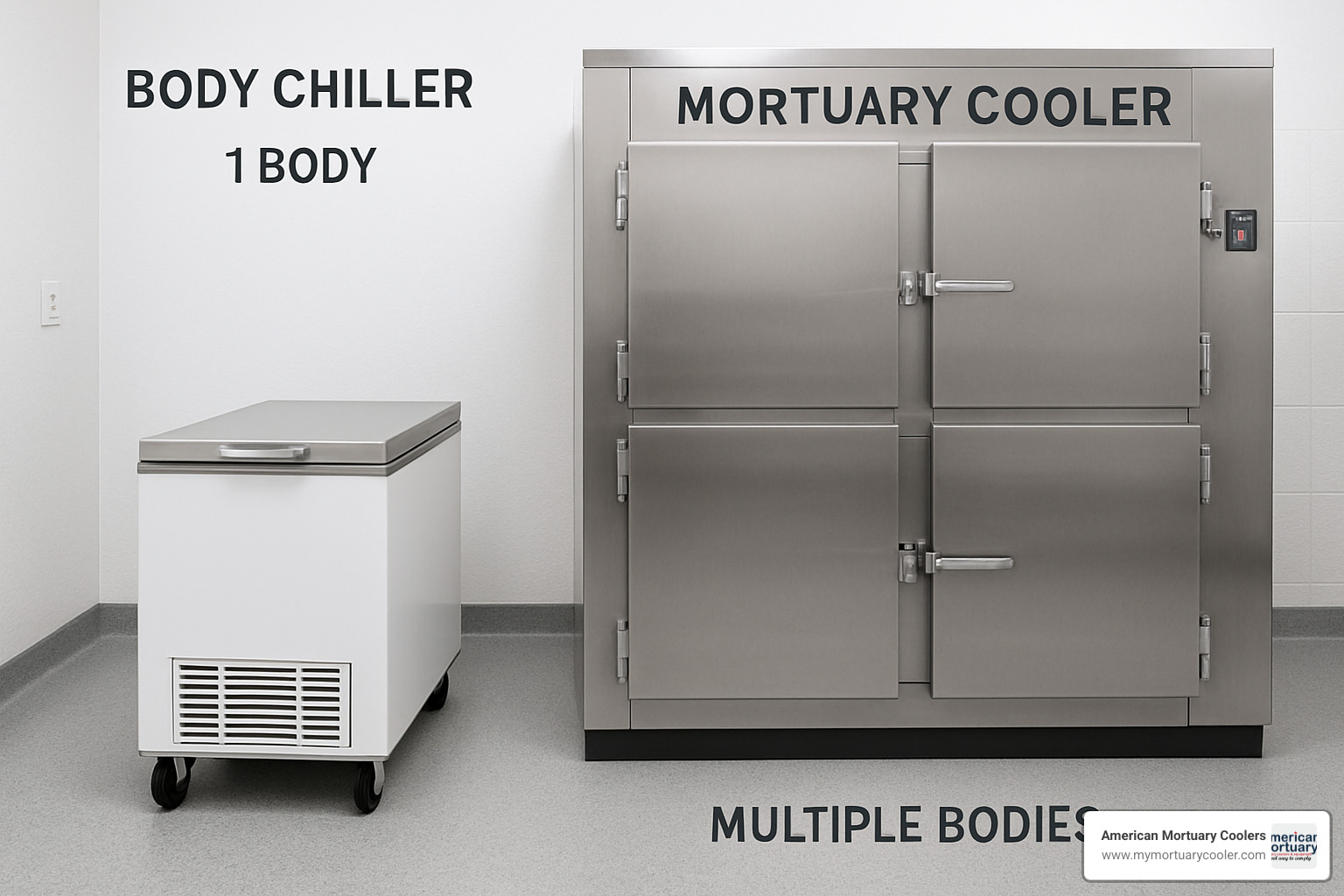
When a body chiller is the right choice
Mobile disaster response situations call for portable body chiller units that can be set up quickly at incident sites. When Hurricane Katrina hit, for example, forensic teams needed equipment they could transport and deploy rapidly while still maintaining dignity and proper preservation.
Athletic facilities often prefer compact systems they can move between training rooms or store away when not needed. The Recovery Chiller's ability to turn any bathtub into an ice bath gives sports medicine professionals incredible flexibility without permanent installation requirements.
At-home plunge enthusiasts love body chillers for their convenience and cost savings. Instead of spending $40-60 weekly on ice, the Pod Chiller's $0.19 daily operating cost makes cold therapy accessible for regular use. Plus, at just 39 pounds, it won't break your back moving it around.
Forensic laboratories with specific evidence preservation protocols often need specialized body chiller units designed for their unique requirements. These systems provide the precise temperature control needed for legal proceedings while accommodating specialized workflow needs.
When a mortuary cooler makes more sense
Funeral homes need the robust construction and high capacity that only professional mortuary coolers provide. These facilities handle varying volumes throughout the year and need equipment that can operate reliably for decades while meeting strict regulatory requirements.
Hospitals and medical facilities benefit from walk-in mortuary coolers that accommodate multiple cases while providing easy access for medical staff. The larger capacity and sophisticated monitoring systems ensure compliance with healthcare regulations and accreditation standards that these facilities must maintain.
High-volume morgues in major cities require maximum capacity and redundant safety features. When you're handling dozens of cases weekly, equipment failure simply isn't an option. Professional mortuary coolers provide the reliability and backup systems these facilities depend on.
Educational institutions with anatomy programs need mortuary coolers designed for long-term storage and frequent student access. Medical schools require specialized units that can maintain preservation conditions while accommodating the unique demands of educational use.
Innovations & Future Trends in Body Chiller Technology
The body chiller industry is experiencing a technological revolution that's making these systems smarter, faster, and more environmentally friendly than ever before. As someone who's watched this industry evolve over decades, I'm genuinely excited about where we're heading.
Today's 4× fast cooling compressors are game-changers for anyone who's ever waited impatiently for their ice bath to reach the perfect temperature. These advanced compressors don't just cool faster - they're incredibly energy-efficient, often using 30% less power than older models while delivering superior performance. It's like upgrading from a flip phone to a smartphone - the difference is that dramatic.
Ozone + filtration hybrids represent a brilliant marriage of technologies that's solving one of the biggest headaches in body chiller maintenance. These systems automatically run ozone generators for just 5 minutes every hour, killing bacteria and viruses without any harsh chemicals. The ozone then breaks down into harmless oxygen, while 20-micron filtration continuously removes physical debris. The result? Crystal-clear water that stays fresh for weeks instead of days.
Wi-Fi monitoring has transformed how we interact with our cooling systems. Modern body chillers send real-time updates to your smartphone, alerting you if temperatures drift or maintenance is due. Imagine being at work and getting a notification that your ice bath is perfectly chilled and ready for your post-workout recovery session. It's convenience that seemed like science fiction just a few years ago.
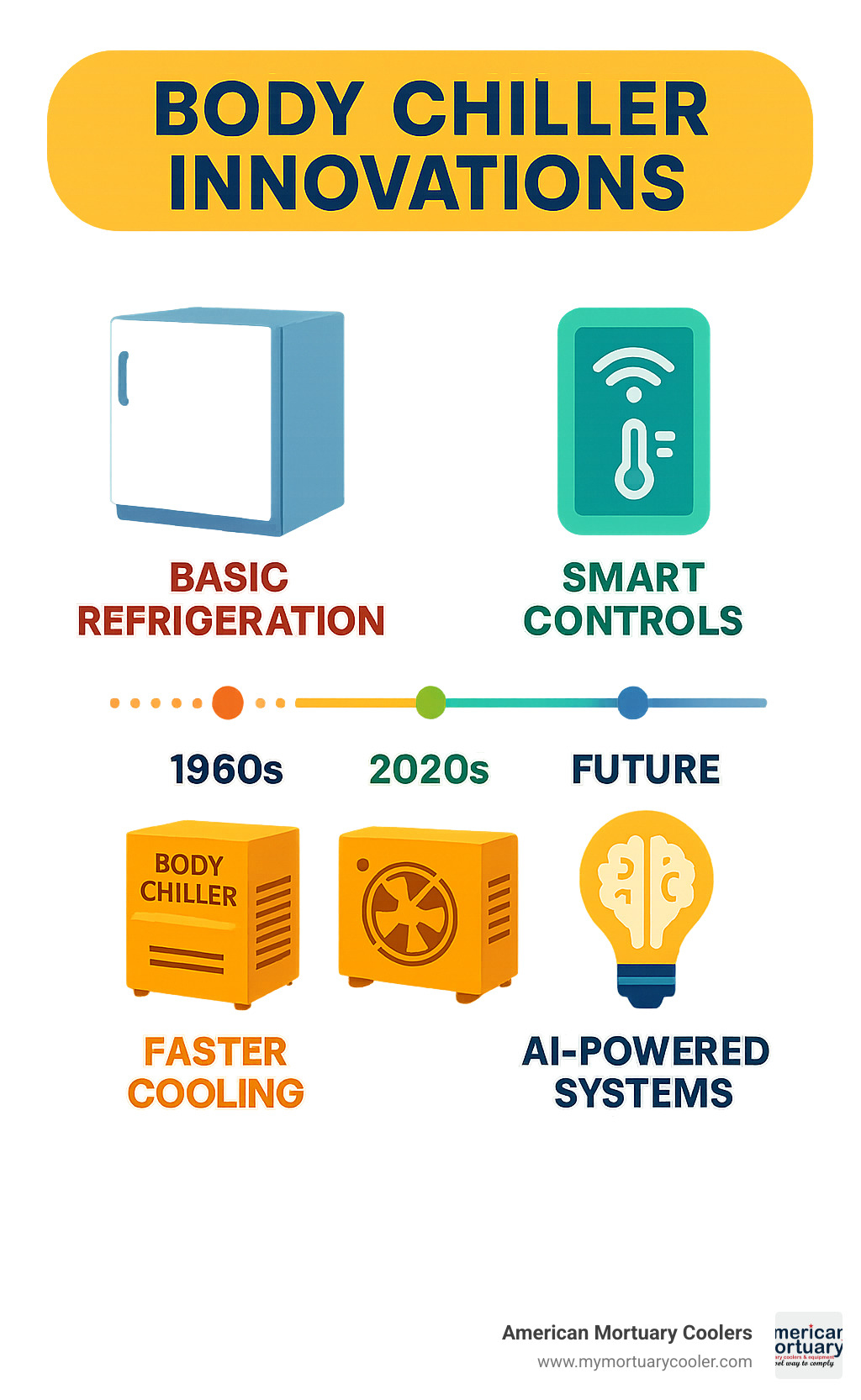
AI temperature learning is where things get really interesting. These smart systems observe your usage patterns - when you typically use your body chiller, what temperatures you prefer, even how ambient weather affects your cooling needs. After a few weeks, the system starts anticipating your needs, pre-cooling before your usual workout time or adjusting temperatures based on the forecast. It's like having a personal assistant who knows exactly how you like your ice bath.
The shift toward eco-friendly refrigerants reflects our industry's commitment to environmental responsibility. New refrigerants like R-32 and R-454B have dramatically lower global warming potential while actually improving cooling performance. As regulations tighten around older refrigerants, manufacturers are staying ahead of the curve with solutions that are better for both performance and the planet.
Looking ahead, the integration of these technologies promises even more exciting developments. We're seeing prototypes that combine all these innovations into seamless systems that practically run themselves while providing unprecedented reliability and efficiency. For funeral professionals, this means mortuary coolers that require minimal maintenance while ensuring perfect preservation conditions. For athletes and wellness enthusiasts, it means body chillers that deliver the perfect therapeutic experience every single time.
Frequently Asked Questions about Body Chillers
When people first find body chillers, they naturally have questions about safety, costs, and whether they can create their own system. Let me address the most common concerns I hear from customers every day.
What temperature should a body chiller reach for safe use?
The safe temperature for your body chiller really depends on what you're using it for - and honestly, this is one of the most important questions you can ask. Getting the temperature wrong can ruin your experience or even be dangerous.
For ice bath therapy, most body chillers work best between 45°F and 55°F. If you're just starting out, I'd recommend staying closer to 55°F until your body adapts. Experienced cold plunge enthusiasts often prefer temperatures as low as 37°F, but please work your way down gradually. Your body needs time to adjust, and there's no shame in taking it slow.
Personal cooling vests have a much wider comfort range - 40°F to 70°F - which makes sense since you're wearing them for hours rather than minutes. You can adjust based on how hot it is outside and your personal tolerance. Construction workers in Arizona might want that 40°F setting, while someone in a milder climate might prefer 60°F.
For mortuary applications, we maintain temperatures around 38-40°F with precise digital controls. These professional units include alarm systems that keep temperatures within ±2°F of the setpoint - consistency is absolutely critical for proper preservation and regulatory compliance.
Here's my biggest safety tip: if you're considering cold therapy for medical reasons, please talk to your doctor first. This is especially important if you have heart conditions or unusual sensitivity to cold.
How much does a body chiller cost across different models?
Body chiller pricing spans a pretty wide range, and I get this question almost daily. The good news is there are options for nearly every budget and application.
For personal use, you're looking at under $100 for basic cooling hat inserts all the way up to $1,200 for sophisticated circulating vest systems. The popular Pod Chiller runs $799 (down from $1,197), while the Recovery Chiller offers financing starting at $89 per month. That Recovery Chiller is particularly appealing because it costs only $0.19 per day to operate - much cheaper than buying ice constantly.
Professional mortuary body chillers start around $7,073 for basic 2-body units and can exceed $15,000 for large walk-in systems with all the bells and whistles. Custom units with specialized requirements cost more, but we work hard to provide value engineering that delivers exactly what you need without unnecessary extras.
Don't forget about operating costs when you're budgeting. That Recovery Chiller I mentioned sips electricity at less than 20 cents daily, while larger mortuary units typically draw about 6 amps at 110V. The energy-efficient compressors in modern units help keep those monthly bills reasonable.
The investment almost always pays for itself when you consider the alternatives - buying ice for therapy sessions gets expensive fast, and the convenience factor alone makes most people glad they chose a dedicated body chiller.
Can I convert an existing freezer into a body chiller safely?
I hear this question a lot, and I understand the thinking - why not save money by modifying something you already have? Unfortunately, I have to recommend against freezer conversions for several important reasons.
Standard freezers simply lack the precise temperature controls that make body chillers effective and safe. They're designed to get really cold and stay there, not maintain the specific temperatures needed for therapeutic cooling or proper preservation. You also miss out on circulation systems, filtration, and the safety features that prevent dangerous temperature swings.
For mortuary applications, converted freezers cannot meet regulatory requirements. Health departments require NSF-approved materials, redundant alarm systems, proper drainage, and other specialized features that standard freezers don't have. Using non-compliant equipment could put your license at risk.
Even for personal ice bath use, dedicated body chillers provide vastly superior performance. The Recovery Chiller's integrated circulation, filtration, and precise temperature control create a much better experience than any freezer conversion could achieve. Plus, it transforms any bathtub into an ice bath - no modification needed.
I know budget constraints are real, and I wish I could recommend a cheaper shortcut. But the long-term reliability, safety, and performance benefits of purpose-built systems justify the investment. A proper body chiller designed for your specific needs will serve you safely for years, while a converted freezer might create problems you never anticipated.
If cost is a major concern, consider financing options or starting with a smaller, basic unit that you can upgrade later. Your safety and satisfaction are worth doing it right the first time.
Conclusion
When you step back and look at the bigger picture, body chillers have come a remarkably long way. What started as specialized equipment for astronauts and military pilots over 60 years ago has blossomed into an entire ecosystem of cooling solutions. Today, whether you're an athlete chasing faster recovery, a worker battling heat stress, or a funeral professional ensuring dignified care, there's a body chiller designed specifically for your needs.
The real magic isn't just in the cooling itself - it's in how these systems have become smarter, more efficient, and incredibly reliable. Modern body chillers deliver precise temperature control while quietly handling filtration, sanitation, and monitoring in the background. The Recovery Chiller's $0.19 daily operating cost proves you don't need to break the bank for professional-grade performance, while robust mortuary units provide the rock-solid reliability that funeral homes depend on day after day.
At American Mortuary Coolers, we've built our reputation on understanding that one size definitely doesn't fit all. Every funeral home has unique space constraints, volume requirements, and operational needs. That's why our custom-built approach ensures your body chiller system fits like a glove - delivering exactly the capacity and features you need without paying for extras you don't.
Our Tennessee-based team takes pride in providing one-stop solutions that eliminate the headache of coordinating multiple vendors. From initial consultation through installation and ongoing support, we handle every detail. With direct delivery across the contiguous 48 states, distance never becomes a barrier to getting the right equipment when you need it.
The future of body chiller technology looks incredibly promising. We're already seeing AI-powered temperature learning, hybrid sanitation systems, and eco-friendly refrigerants that deliver better performance while protecting the environment. These advances mean the body chiller** you invest in today will continue improving through software updates and smart features.
More info about Mobi Medical equipment showcases how we've expanded beyond traditional mortuary cooling to serve the broader medical equipment community. This experience gives us unique insights into what really matters when selecting cooling equipment for professional applications.
The bottom line is simple: whether you're exploring your first body chiller or upgrading equipment that's served you well for years, success comes down to partnering with people who genuinely understand both the technology and your world. We've spent years learning what works, what doesn't, and how to deliver solutions that exceed expectations while staying within budget.
Ready to find how the right body chiller can transform your operations? Our team is standing by to discuss your specific needs and show you exactly why so many professionals trust American Mortuary Coolers for their most critical cooling requirements.



